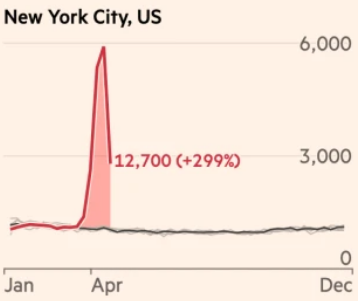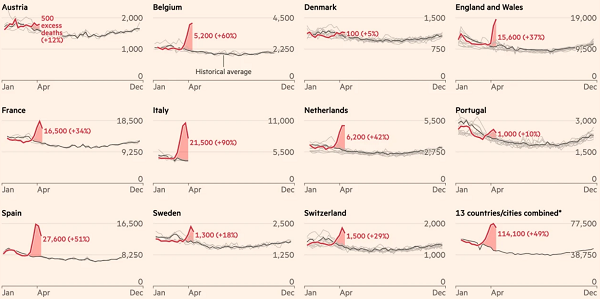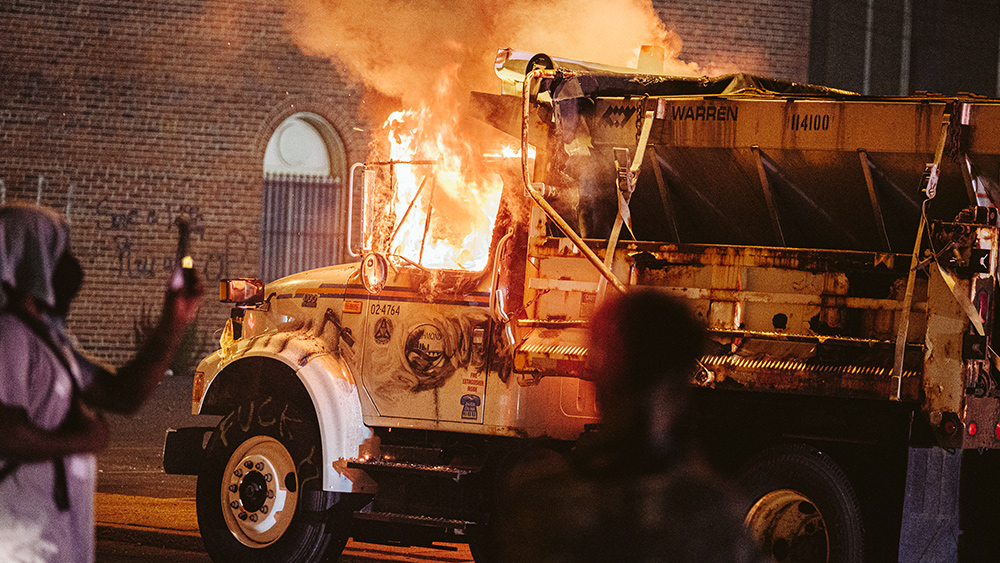
Advertisement
Over 62,000 Americans have now died from the coronavirus, surpassing the total number of Americans who died in the Vietnam War. Soon, the number of American casualties from the coronavirus will exceed twice the number that die from the regular flu in a full year, yet there remain pandemic denialists who still absurdly claim the coronavirus is “no more dangerous than the flu.”
They are immune to math and logic, as we’ve all noticed. So why do they cling to their denialism in the face of overwhelming, irrefutable evidence of mass death, mass graves and extreme danger?
The answer, it turns out, has more to do with psychology than mathematics. There are five stages of grief described by Grief.com:
Denial
Anger
Bargaining
Depression
Acceptance
The people you see who are still claiming the coronavirus isn’t really killing very many people — and poses no real danger to society — are stuck in the “denial” stage of grief.
The reality of the coronavirus — mass death, highly infectious disease, economic collapse and a temporary loss of local freedoms — is causing extreme mental anguish in the minds of many people. But instead of integrating the new reality into their behaviors, they descend into desperate denial, hoping the coronavirus isn’t real and trying to convince others it’s no big deal in order to surround themselves with a comfort layer of peers who also share in their denial. (We see this across much of the independent media to this day.)
I explain the five stages of coronavirus grief in this important Health Ranger Report video:
Brighteon.com/663729fe-6d97-48d4-9585-cfb594255383
See all my videos and podcasts at the Health Ranger Report channel on Brighteon.com.
A mental strategy to reject science and mathematics in favor of constructing an artificial bubble that provides emotional comfort
In order to achieve denial, of course, prople have to reject science and mathematics and fabricate their own inaccurate numbers that they wish would “prove” the coronavirus isn’t killing anyone at all. But the recent Financial Times analysis of global “excess mortality” statistics has destroyed any last hope that the coronavirus wasn’t killing anyone.
It turns out that global death rates from any cause have surged 50% over the last month or so, and official statistics are vastly under-reporting the real number of coronavirus deaths. An honest mathematical analysis also reveals that the coronavirus is 56 to 100 times more deadly than the regular flu. Denialists try to obfuscate this fact by conflating the Case Fatality Rate (CFR) of the regular flu with the Infection Fatality Rate (IFR) of the coronavirus, comparing apples to oranges and hoping no one notices. These are all mental strategies of people who are stuck in denial.
From the Financial Times analysis, excess mortality figures from New York City:

A similar trend in excess mortality is observed across more than a dozen other countries and cities:

Moving from Denial to Anger
Many are beginning to transition to the “anger” stage, which is what’s behind the public protests and childish outbursts of profanity like we’re now seeing from juvenile Big Tech icons like Elon Musk. In the anger stage, people look for someone to blame for their misery.
Right now, many people are blaming the very people who sounded the alarm and advocated for the lockdowns that have so far averted over two million deaths in the USA alone. They rage, “The lockdowns weren’t necessary!”, pretending that the highly contagious virus would have somehow stopped infecting people all on its own, even without social distancing measures.
Such beliefs are at odds with reality, of course, and fall into the same category as “Flat Earth” beliefs which pretend the Earth is flat (these beliefs are surprisingly common across certain sectors of the independent media, by the way).
Bargaining and begging
In the bargaining stage, people beg for a reversal of events which they now begin to see as being real. They often beg God to restore their stock market investments or give them their job back, offering to correct some sin as part of the bargain.
This bargaining often attempts to appeal to cosmic forces or divine forces to intervene and somehow reverse devastating events which have already taken place, such as the death of a loved one or the loss of a job or business.
Interestingly, right now the Trump administration is positioning itself as a kind of “god” by offering bailout money to those who were economically harmed by events, effectively saying, “Big Government is your god and we are here to make sure no one suffers any financial loss.”
The price for such intervention, of course, is a kind of “deal with the Devil” as economic socialism spreads across the landscape and people are paid to stay home and not work, crippling any effort by small businesses to find employees during the reopening phases that hope to restore the US economy.
Depression sets in when people realize the world they once knew won’t “bounce back” in two weeks
After the begging and borrowing, and upon realizing the world they once knew won’t magically reappear, people often slide into depression. I call this “despair,” and it’s something I’ve detailed in my one-hour lecture about the “Ten Stages of Coronavirus,” shown here:

And the second part:

The “despair” time period, currently estimated to be September – October of this year (but subject to change as we adapt to real-world events), corresponds to the “depression” phase of the grief progression.
Listen to my full analysis of the 10 Stage of Coronavirus in this Brighteon.com video:
Finally, acceptance or integration
The last stage of all this is acceptance, or what I call integration. It means people begin to integrate the new reality into their lives and work on mental and emotional strategies to move forward while navigating their new reality.
For many people, getting to “integration” takes a very long time. But one thing I’ve noticed is that some people can skip all the five steps and go straight to acceptance / integration due to rapid mental adaptability.
Most of our readers fall into this category. I’ve also noticed that people who have previously been subjected to extreme events — which includes front line soldiers, police officers, first responders, etc. — tend to be those who can rapidly accept disturbing new realities without needing to go through long adjustment periods.
The reason this matters is because the more rapidly you can get to “acceptance,” the quicker you can begin to take action to solve problems. In contrast, people who are stuck in “denial” or other stages are of little help, since they are still emotionally processing the new reality. In effect, they are slow at building new neurological pathways that are necessary to process and navigate the new reality, and for those who didn’t have those pathways to start, building them can take a very long period of time.
In effect, the race to adapt and respond to the new reality is actually a race to build new neurological pathways of adaptation from which the organism (you, the human being) can adapt and survive.
The upshot of all this is that when you observe people who are still stuck in denialism over the coronavirus, you are really observing people who have rigid, under-developed neurological pathways that haven’t yet caught up to reality. Their ability to process new information about a second wave of infections, for example, will remain stunted until their neurology catches up to the real world.
You could almost call this a “deer in the headlights” syndrome for humanity. Many people are frozen with inaction, right in the middle of a deadly, genetically engineered pandemic bioweapon. Most of them, obviously, will not fare very well in the months ahead. We have reached what can truly be called a survival of the fittest moment for humanity, but it’s not physical fitness that matters as much as neurological fitness and adaptation.
Watch the important videos above, and stay informed at Pandemic.news or NaturalNews.com. We will help you navigate and survive this pandemic because we are not stuck in “denial.”
Advertisement
Advertisements
















